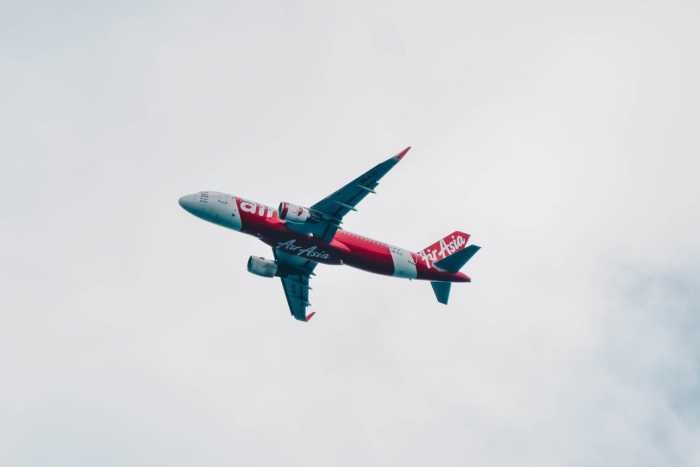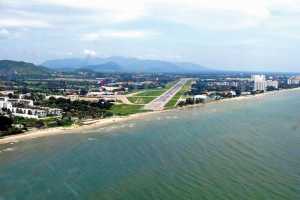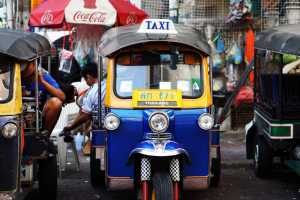
2010 South East Asia Aviation Roundup
3rd Jan 2011

Take heart, in Thailand we live in by far the fastest growing aviation market in the world.
The International Air Transport Association (IATA) has revised its March traffic forecasts for Asia Pacific traffic for 2010 up from 12 percent to 16.2 percent in its June forecast. This is expected to deliver a USD2.2 billion profit, more than double the previous forecast of USD900 in March and a major reversal from the USD2.7 billion loss in 2009, according to IATA (source: Centre for Asia Pacific Aviation ' CAPA).
Compared this with global traffic forecasts of +7.3 percent in March and +10.2 percent in June, then we can see that Asia Pacific is clearly well ahead of the play.
However, CAPA also showed that despite these forecasts airlines remain amongst the most vulnerable businesses to external factors beyond their control, such as volcanic ash, domestic political upheavals (Red Shirts in Thailand, riots in Uzbekistan) and adverse weather and economic conditions.
For example a look at the daily share price movements as at 7 June, 2010 of 22 Asia Pacific airlines shows just two, Asiana of South Korea and China Airlines, registering positive. Malaysia Airlines and Cathay Pacific were neutral. All the rest, including Thai Airways (-2.5, fifth highest drop in share price) were negative, with AirAsia, which services Phuket, having the largest reversal at -4.6 percent.
By comparison a month earlier, THAI had the best change of + 1.9 percent and Air China, coupled with four other Chinese based airlines, were the worst performers. Clearly the Red Shirt chaos had not impacted by early May on THAI's performance, but a month later the share price movement had changed dramatically. Nonetheless, with the strong government backing THAI receives its share price has held up remarkably well compared to some other airlines, which have shown great volatility as the aviation industry continues to recover, albeit slowly, from the recession.
For THAI the Bangkok riots have been a disaster, which is a pity as the airline was tracking very well up until May. Its Earnings before Interest, Tax, Earnings and Amortization (EBITDA) margin in the first quarter of 2009 was 23 percent, or USD353 million, the same in the first quarter of 2010. But the profit in 1QFY2010 was much higher than in 2009, at just over 21 percent compared to 19 percent.
The passenger is benefitting from all of this volatility. For example, AirAsia X, the long haul low cost carrier from the AirAsia group, was offering return fares to London between October and November at around 6000 THB from the Gold Coast and 6700 THB from Melbourne, airport taxes and charges included. That is around the same price full service carriers are charging between Phuket and Bangkok, and it some cases they are more expensive.
And even the AirAsia miracle growth run seems to be slowing down, according to CAPA. They quote AirAsia's charismatic founder and Group CEO Tony Fernandes, who seems to spend a lot of time following his Team Lotus Formula 1 team around the world these days, as saying he has noticed 'some dilution of the AirAsia business model.' He was explaining a move toward separate listings of the various brands, such as AirAsia X in Thailand, Malaysia (home of Air Asia) and Indonesia.
And speaking of Indonesia, its national airline Garuda Indonesia is again flying into European skies after a six year break caused by it being on the European Union's 'black book' for safety oversight, which it long argued was not effective at Garuda. Under dynamic President and CEO Emirsyah Satar, Garuda made a record profit of USD125 million (4 billion THB) in 2009. Garuda has become a more serious player in Asia Pacific. Its joining of the SkyTeam alliance will also help it become more competitive with carriers like THAI in the region.
Overall, the prospects for the airline industry are looking better than they have for some time, albeit with the industry waiting with bated breath to see what new disastrous event is around the corner to push it back into the red ink again.
Carriers like Emirates out of Dubai, while not strictly in Asia Pacific region, are leading the way with purchase of 32 new Airbus A380 aircraft worth US11.5 billion, and taking total orders of the giant aircraft to 90. In theory the A380 could take up to 800 passengers across a double deck, but in practice the number amongst all the airlines that fly them - Singapore Airlines and Lufthansa of Germany are two others - the actual numbers are more like 400 - 500 as the airlines focus on first and business class, which take up a lot more room in the modern day configuration of lie flat seats and even 'compartments' on Singapore Airlines and Emirates.
The airline alliances also continue to gobble up new members. Star Alliance, the world's largest airline alliance, recently took on TAM Airlines of Brazil as its 27th member with more airlines lined up; Garuda is set to join SkyTeam and Kingfisher Airlines, one of India's leading private sector airlines, being invited to join oneworld, which includes British Airways and Qantas, which both fly to Bangkok.









